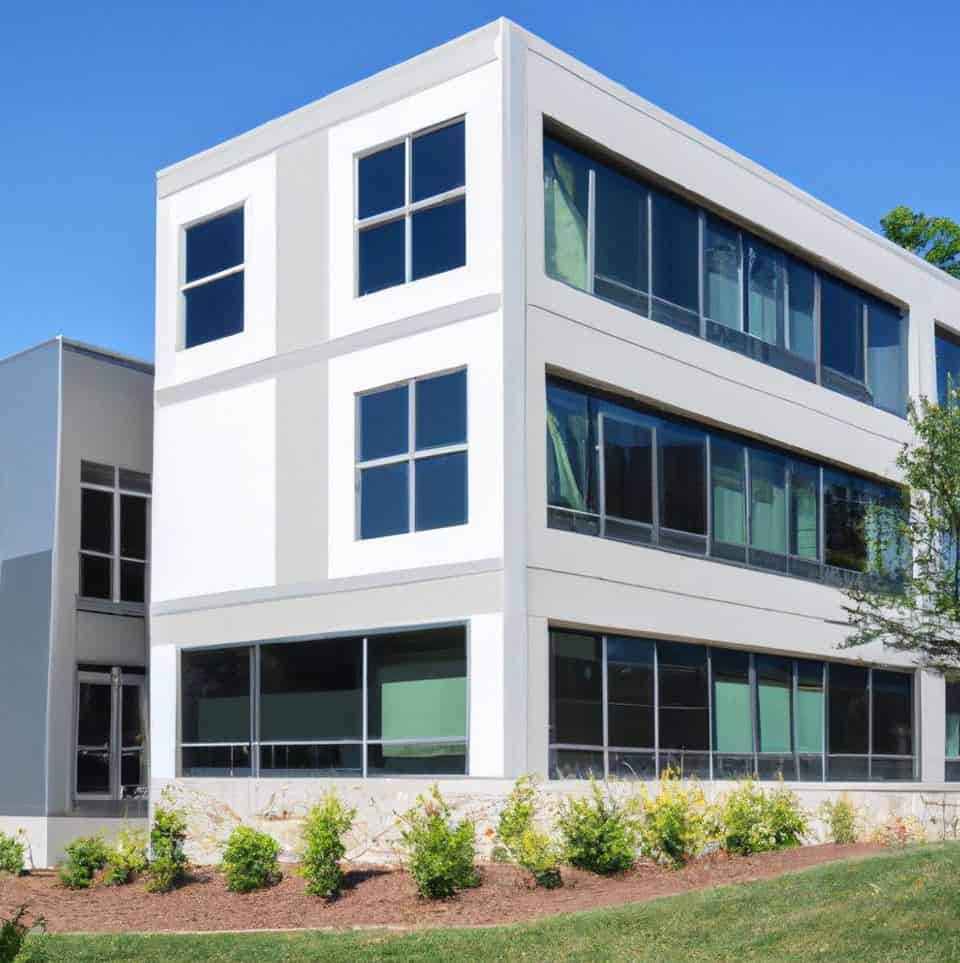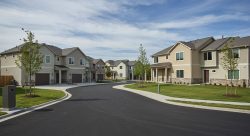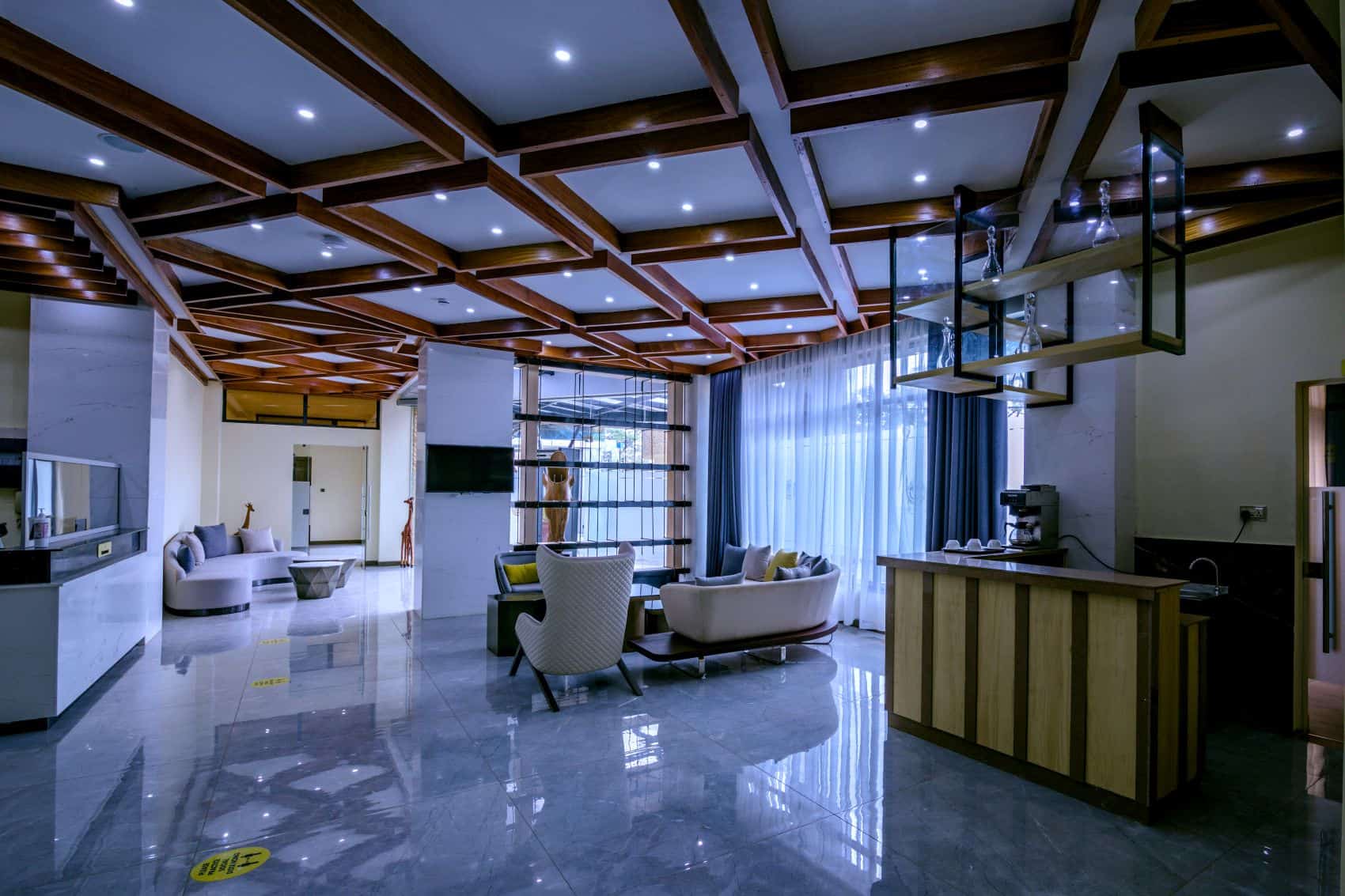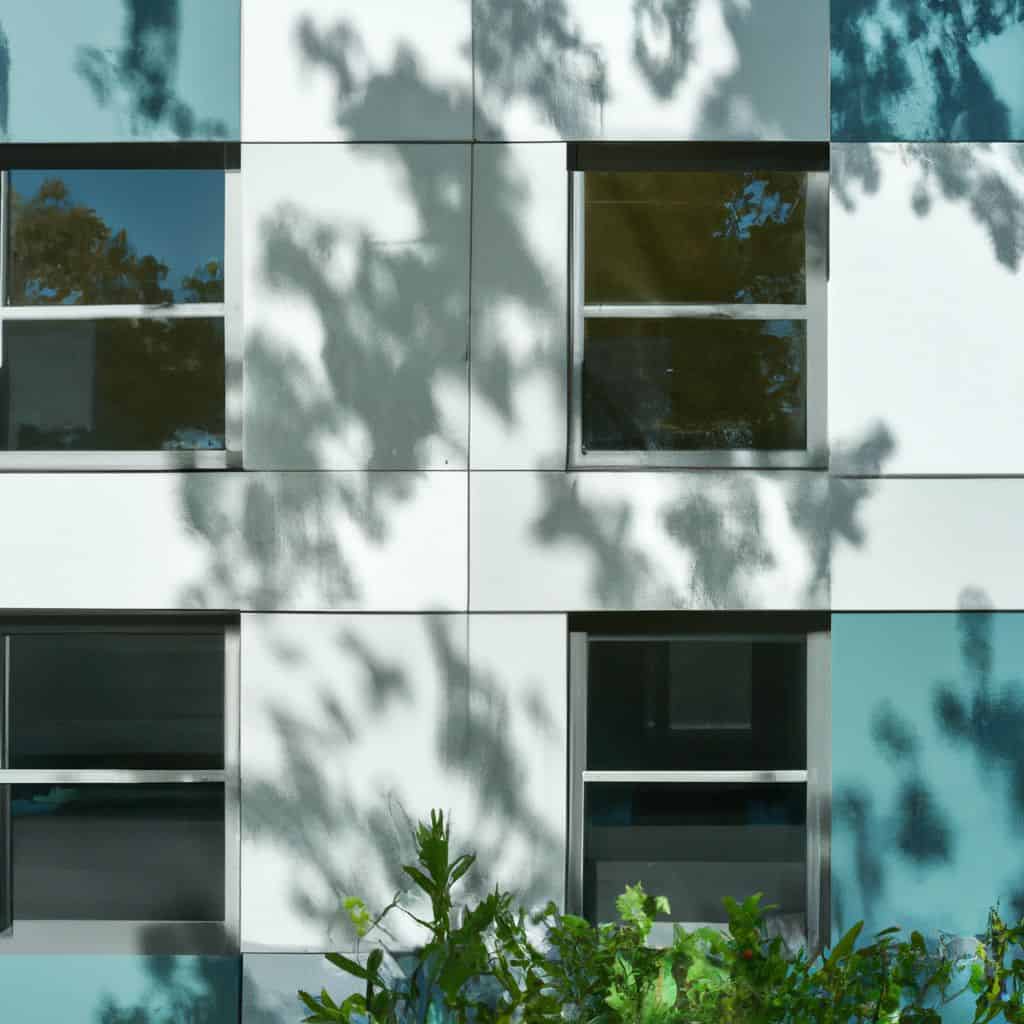Discover How EIFS Can Dramatically Reduce Energy Use, Cut Costs, and Future-Proof Your Indiana Property with a High-Performance Building Envelope
When it comes to deep energy retrofits, property owners across Central Indiana are discovering that Exterior Insulation and Finish System (EIFS) offers one of the most effective pathways to dramatic energy savings. After 22 years in the EIFS business, I’ve seen firsthand how the right retrofit solution can transform an energy-hungry building into a model of efficiency.
Here at Indiana Wall Systems, we’ve completed deep energy retrofits on everything from historic homes in Carmel to commercial buildings in Indianapolis. The results? Energy consumption reductions of 30-50% and payback periods that make building owners smile.
But not every energy retrofit project is the same. Let’s dive into what makes EIFS such a powerful tool for building energy optimization and how to evaluate whether it’s right for your property.
Key Takeaways
- EIFS provides continuous insulation that eliminates thermal bridging in existing buildings
- Deep energy retrofits with EIFS typically achieve 30-50% energy consumption reduction
- Payback periods range from 7-15 years depending on building type and local utility rates
- Moisture management strategy is critical for long-term performance in Indiana’s climate
- Code compliance review ensures your retrofit meets current energy standards
EIFS Deep Energy Retrofit Impact
Energy Reduction
Year Payback
Year Lifespan
Transform your building into an energy-efficient powerhouse with proven EIFS technology
Understanding Deep Energy Retrofits
A deep energy retrofit goes way beyond slapping some insulation in the attic. We’re talking about a comprehensive approach to building energy optimization that addresses the entire building envelope.
Think of your building like a thermos bottle. If there are gaps, cracks, or thin spots anywhere in that bottle, your coffee gets cold fast. The same thing happens with buildings that haven’t been properly sealed and insulated.
Deep energy retrofits typically target:
- Continuous insulation retrofit across all exterior surfaces
- Air sealing to eliminate unwanted infiltration
- Thermal bridging mitigation at structural connections
- High-performance envelope upgrades including windows and doors
- HVAC load reduction through improved building performance
The US Department of Energy defines a deep energy retrofit as one that achieves operational energy savings of 30% or more. In our experience with Indiana projects, we regularly see savings of 40-60% when EIFS is properly integrated into the retrofit strategy.
Why EIFS Excels in Deep Energy Retrofits
Continuous Insulation Advantage
Traditional wall insulation gets interrupted by studs, plates, and other structural elements. These thermal bridges act like highways for heat loss. EIFS changes the game by providing continuous insulation across the entire exterior wall surface.
When we install exterior insulated panels suitable for deep energy retrofits, we’re essentially wrapping your building in a thermal blanket. No thermal bridges. No gaps. Just consistent, high-performance insulation from foundation to roof.
Thermal Bridging: Traditional vs EIFS
Traditional Insulation
Studs create thermal bridges
EIFS Continuous Insulation
No thermal bridging
EIFS eliminates thermal bridges, reducing heat loss by up to 40%
Superior R-Value Performance
The effectiveness of various EIFS insulation thicknesses depends on your climate zone and existing building construction. Here in Indiana, we typically see:
- 2-inch EIFS: R-8 to R-10
- 3-inch EIFS: R-12 to R-15
- 4-inch EIFS: R-16 to R-20
- 6-inch EIFS: R-24 to R-30
For residential deep energy retrofits, we often recommend 3-4 inch systems. Commercial projects might go thicker, especially when targeting net-zero ready retrofit performance.
Integrated Air Sealing
A properly installed EIFS system creates what building scientists call a strategic airtight layer. The base coat and mesh work together to seal the building envelope, dramatically reducing air infiltration.
We verify this with blower door testing before and after installation. Typical improvements? We see air changes per hour drop from 8-12 ACH to 2-4 ACH in older buildings.
Evaluating Your Building for EIFS Retrofit
Building Assessment Fundamentals
Before we recommend any system for deep energy retrofits, we conduct a thorough energy audit baseline. This includes:
Thermal Imaging Diagnostics We use infrared thermography surveys to identify heat loss patterns, moisture intrusion, and structural thermal bridges. This gives us a clear picture of where energy is escaping.
Airtightness Verification
Blower door tests reveal exactly how leaky your building is. We test at 50 pascals of pressure differential to quantify air infiltration rates.
Moisture Assessment Indiana’s climate presents unique challenges. Our moisture management strategy evaluation looks at:
- Existing vapor barriers
- Drainage plane design adequacy
- Condensation risk analysis for new insulation layers
- Current moisture problems
📋 EIFS Retrofit Assessment Checklist
🌡️ Thermal Assessment
💧 Moisture Analysis
🏗️ Structural Review
⚡ Energy Audit
📞 Schedule your comprehensive EIFS assessment today: (765) 341-6020
Structural Considerations
Not every building is ready for EIFS without some prep work. We evaluate:
Load-Bearing Capacity EIFS adds weight to exterior walls. While it’s relatively light compared to traditional stucco, we verify that existing foundations and framing can handle the additional load.
Attachment Points The existing building structure must provide adequate attachment for EIFS components. Sometimes this means adding furring strips or reinforcing attachment zones.
Window and Door Integration Proper thermal break detailing around openings is crucial. We often recommend window upgrades as part of the overall retrofit to optimize the window-to-wall ratio for energy performance.
EIFS System Selection for Deep Retrofits
Climate-Appropriate Design
Indiana sits in IECC 2024 climate zones 4A and 5A, which means we need systems that handle both heating and cooling loads effectively. Our drainage plane design must account for:
- Summer cooling condensation
- Winter heating season moisture drive
- Freeze-thaw cycling
- High humidity periods
For residential retrofit applications, we typically specify water-managed EIFS with integrated drainage and drying capability.
Indiana Climate Zone Performance
Climate Zone 4A
Climate Zone 5A
EIFS systems are optimized for both Indiana climate zones, providing year-round comfort and efficiency
Insulation Thickness Optimization
The costs of the EIFS system scale with insulation thickness, but so do the energy savings. We use energy modeling software to determine the optimal thickness for each project.
Cost-Benefit Analysis by Thickness
| Insulation Thickness | Typical R-Value | Material Cost/SF | Energy Savings | Payback Period |
|---|---|---|---|---|
| 2 inches | R-8 | $8-12 | 25-35% | 12-18 years |
| 3 inches | R-12 | $10-15 | 35-45% | 8-12 years |
| 4 inches | R-16 | $12-18 | 40-50% | 7-10 years |
| 6 inches | R-24 | $16-24 | 45-55% | 8-12 years |
Sweet Spot: 3-4 inch systems offer the best balance of upfront investment and energy savings for most Indiana projects.
Data based on Indiana Wall Systems’ 22 years of project experience in Central Indiana
The sweet spot for most Indiana projects? 3-4 inch systems that balance upfront investment with energy savings.
Vapor Permeability Control
Getting the vapor permeability right is critical in our climate. Too vapor-tight and you risk condensation problems. Too permeable and you lose thermal performance.
We specify EIFS finishes with vapor permeability ratings between 8-15 perms, allowing the wall system to dry while maintaining thermal integrity.
Financial Analysis and Incentives
Life-Cycle Cost Assessment
Smart building owners don’t just look at upfront costs. They run a life-cycle cost assessment that factors in:
Initial Investment:
- EIFS material and installation
- Substrate preparation
- Window/door upgrades
- Scaffolding and access
Operating Savings:
- Reduced heating costs
- Lower cooling expenses
- Decreased maintenance
- Extended building lifespan
End-of-Life Value:
- Improved resale value
- Extended service life (25-30 years)
- Reduced future retrofit needs
Utility Rebate Programs
Many Indiana utilities offer retrofit incentive funding for energy efficiency improvements. We help clients navigate programs like:
- Duke Energy efficiency rebates
- AES Indiana commercial incentives
- NIPSCO residential programs
- Federal tax credits for energy improvements
These programs can reduce project costs by 15-30%, dramatically improving payback period analysis results.
EIFS Retrofit ROI Timeline
Initial Investment
25% Recovered
Break Even
Pure Profit
Return on Investment Metrics
Based on our project database, here’s what Indiana property owners typically see:
Residential Projects:
- Annualized energy cost reduction: $800-2,400/year
- Payback period: 8-15 years
- Property value increase: 3-8%
Commercial Buildings:
- Energy demand reduction: 25-45%
- Operational energy savings: $2-8 per square foot annually
- Payback period: 6-12 years
Performance Monitoring and Verification
Energy Performance Tracking
A deep energy retrofit isn’t complete until we verify the results. Our performance monitoring plan includes:
Pre-Retrofit Baseline We establish 12 months of energy data before construction begins. This gives us a clear baseline for comparison.
Post-Installation Monitoring
We track building energy consumption for at least one full year after completion. This allows us to account for seasonal variations and occupancy changes.
Commissioning Process Building enclosure commissioning ensures all systems are performing as designed. We use thermal imaging, moisture meters, and blower door testing to verify installation quality.
Long-Term Performance Assurance
EIFS systems are designed for 25-30 year service life, but only with proper installation and maintenance. We provide:
- 10-year workmanship warranty
- Annual inspection recommendations
- Maintenance planning for long-term performance
- Performance guarantee documentation
Integration with Renewable Energy
Solar-Ready Design
Many deep energy retrofit projects include renewable energy integration. EIFS actually makes solar installations easier and more effective:
Photovoltaic Readiness The continuous insulation provided by EIFS reduces building energy loads, making solar arrays more cost-effective. Smaller arrays can meet a larger percentage of the building’s energy needs.
Structural Advantages EIFS creates a uniform attachment surface for solar mounting systems. No need to worry about hitting studs or creating thermal bridges.
Grid-Interactive Efficiency
Grid-interactive efficient buildings that can respond to utility demand signals are the future of energy management. EIFS-retrofitted buildings with their superior thermal mass and insulation create ideal platforms for:
- Battery storage systems
- Smart HVAC controls
- Demand response programs
- Net-zero ready retrofit performance
Code Compliance and Standards
Current Energy Codes
The IECC 2024 requirements have raised the bar for energy performance. EIFS retrofits help existing buildings meet or exceed current standards:
Continuous Insulation Requirements:
- Climate Zone 4A: R-5 continuous insulation
- Climate Zone 5A: R-7.5 continuous insulation
Air Sealing Standards:
- Maximum 3 ACH50 for residential
- Maximum 0.25 CFM/SF for commercial
Building Science Compliance
Modern building science principles guide every aspect of our EIFS retrofit designs:
Thermal Performance We eliminate thermal bridging and create continuous thermal barriers that exceed code minimums.
Moisture Management Our drainage plane design and vapor permeability control strategies prevent moisture problems while maximizing energy performance.
Durability Design Systems are designed for resilience to climate extremes including Indiana’s freeze-thaw cycles, high humidity, and severe weather events.
Common Retrofit Challenges and Solutions
Addressing Existing Building Issues
Moisture Problems Before installing EIFS, we address any existing moisture issues. This might include:
- Fixing roof leaks
- Improving foundation drainage
- Upgrading window flashing
- Installing proper vapor barriers
Structural Limitations Some buildings need reinforcement before EIFS installation:
- Foundation upgrades for added weight
- Framing reinforcement at attachment points
- Thermal break detailing improvements
Access Challenges Complex building shapes or site constraints require creative solutions:
- Specialized scaffolding systems
- Phased installation approaches
- Building enclosure commissioning in sections
Quality Assurance Protocols
Our 22 years of combined experience has taught us that quality control makes or breaks a deep energy retrofit project.
Installation Standards Every installer on our team is certified in proper EIFS application techniques. We follow manufacturer specifications and industry best practices for:
- Substrate preparation
- Insulation attachment
- Base coat application
- Mesh embedding
- Finish coat installation
Testing and Verification We verify performance at every stage:
- Thermal imaging during installation
- Blower door testing at key milestones
- Moisture testing before system closure
- Final performance verification
Future-Proofing Your Investment
Climate Adaptation
Indiana’s climate is changing. Deep energy retrofits need to account for:
Increased Cooling Loads Summers are getting hotter. EIFS helps by:
- Reducing solar heat gain
- Improving thermal mass considerations
- Creating more stable indoor temperatures
Extreme Weather Resilience EIFS-retrofitted buildings show better resilience to climate extremes:
- Impact resistance from reinforcement mesh
- Weather barrier protection
- Structural reinforcement benefits
Technology Integration
Smart building technologies work better in high-performance envelopes:
IoT Integration Sensors can monitor building performance in real-time, optimizing energy use and identifying maintenance needs early.
Advanced HVAC Controls Reduced building loads allow for smaller, more efficient HVAC systems with advanced controls that can respond to grid signals and occupancy patterns.
Selecting the Right Contractor
Expertise Requirements
Deep energy retrofits require specialized knowledge. When selecting a contractor, look for:
Technical Certifications
- EIFS manufacturer certifications
- Building science training
- Energy modeling capabilities
- Code compliance expertise
Project Experience Ask about previous deep energy retrofit projects:
- Similar building types
- Comparable climate zones
- Performance monitoring results
- Reference projects you can visit
Quality Assurance Programs
At Indiana Wall Systems, our approach includes:
Pre-Construction Planning
- Detailed energy audit baseline
- Building enclosure commissioning plan
- Material specifications and sourcing
- Performance monitoring plan development
Installation Excellence
- Daily quality control inspections
- Thermal imaging verification
- Moisture management protocols
- Real-time problem solving
Post-Installation Support
- Performance monitoring assistance
- Maintenance training for building staff
- Long-term warranty support
- Energy performance verification
Frequently Asked Questions
How long does an EIFS deep energy retrofit take?
Most residential deep energy retrofits take 2-4 weeks depending on building size and complexity. Commercial projects can range from 1-6 months. Weather conditions and substrate preparation requirements affect timeline.
What kind of energy savings can I expect?
Properly designed EIFS deep energy retrofits typically achieve 30-50% energy consumption reduction. Actual savings depend on existing building performance, insulation thickness, and occupancy patterns.
How does EIFS compare to other retrofit options?
EIFS provides continuous insulation that eliminates thermal bridging, making it more effective than cavity insulation alone. Cost effectiveness is typically better than interior retrofits or complete cladding replacement.
Will EIFS work on my historic building?
Yes, EIFS can be designed for historic buildings while preserving architectural character. We’ve successfully completed projects on buildings dating back to the 1800s while meeting preservation requirements.
What maintenance does EIFS require after installation?
EIFS requires minimal maintenance – annual visual inspections, periodic cleaning, and prompt repair of any damage. Properly installed systems typically need their first significant maintenance at 15-20 years.
How do I know if my building is a good candidate?
Building assessment factors include structural condition, existing insulation levels, moisture management status, and energy performance goals. We provide free evaluations to determine retrofit feasibility.
Your EIFS Deep Energy Retrofit Journey
Free Assessment
Comprehensive energy audit and feasibility analysis
Custom Design
Tailored EIFS system specification and energy modeling
Expert Installation
Professional installation with quality assurance
Performance Verification
Energy monitoring and warranty protection
Ready to start saving energy?
Call (765) 341-6020 for your free assessment
Your Next Steps Toward Energy Independence
Deep energy retrofits with EIFS offer Indiana property owners a proven path to dramatic energy savings, improved comfort, and enhanced building value. But success depends on proper evaluation, design, and installation.
Ready to explore how EIFS for residential deep energy retrofits could transform your property? Contact Indiana Wall Systems for a comprehensive energy audit baseline and retrofit feasibility analysis.
Our team brings 22 years of EIFS expertise and 160 years of combined experience to every project. We’ll help you navigate utility rebate programs, develop a customized retrofit solution, and ensure your investment delivers the operational energy savings you expect.
Don’t let another heating season drain your budget. Call (765) 341-6020 today to schedule your deep energy retrofit consultation. Let’s work together to create a more efficient, comfortable, and valuable building that’s ready for Indiana’s energy future.
Indiana Wall Systems serves Carmel, Indianapolis, Fishers, and surrounding Central Indiana communities with expert EIFS installation and repair services. Learn more about our energy efficiency solutions and sustainable building practices.





